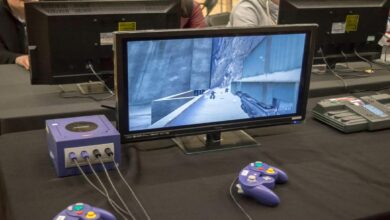
User Interface (UI) design is an essential aspect of game development. It refers to the graphical elements and controls that enable players to interact with the game. UI design not only makes a game aesthetically appealing, but it also enhances the gameplay experience by improving the usability, accessibility, and functionality of the game. A well-designed UI can make a game more immersive, intuitive, and enjoyable for players. In this article, we’ll explore the role of UI design in game development and provide tips on how to hire ux designers for your game project.
The Importance of UI Design in Game Development
UI design plays a crucial role in game development for several reasons. First, it provides players with a visual representation of the game’s mechanics, objectives, and challenges. The UI elements, such as buttons, menus, and icons, help players navigate the game’s features and interact with the game world.You can Hire game developer who can make eye catching game design that can make a game more interesting and addicted to players of all skill levels, from beginners to experts.Remote game developers that can
It enhances the game’s visual appeal and atmosphere. A well-designed UI can create a cohesive aesthetic that reflects the game’s theme, genre, and style. The use of color, typography, and graphics can convey the game’s mood, tone, and emotions. For example, a horror game may use a dark color scheme and creepy fonts to create a sense of tension and fear.
It’s improves the game’s usability and functionality. The UI elements should be responsive, easy to use, and provide clear feedback to players. For instance, a button should change its appearance when clicked to indicate that the action has been executed. The UI should also be optimized for different platforms and devices, such as desktops, consoles, and mobile devices.
Benefits of Good UI Design in Game Development
Enhanced User Experience: A well-designed UI can make a game more intuitive and easier to play, which can enhance the overall user experience. This can lead to increased player engagement, improved retention rates, and ultimately, higher revenue for game developers.
Improved Accessibility: Good UI design can make a game more accessible to a wider range of players, including those with disabilities or who are new to gaming. This can help developers reach a broader audience and create a more inclusive gaming experience.
Better Game Flow: A well-designed UI can help guide players through the game and make it easier to understand the objectives and mechanics. This can improve the overall flow of the game and prevent players from getting stuck or frustrated.
Key Elements of UI Design in Game Development
So what are some of the key elements of UI design in game development? Here are a few to consider:
Consistency: Consistency is key when it comes to UI design. Players should be able to navigate the interface easily and understand how to use different elements without having to re-learn or figure out new mechanics.
Clarity: Clarity is another important aspect of UI design. Buttons, menus, and other interface elements should be clearly labeled and easy to understand, so players know what actions they can take and what information is being presented.
Visual Appeal: While functionality is essential, aesthetics also play a critical role in UI design. A visually appealing interface can enhance the overall experience and make the game more enjoyable to play.
Feedback: Feedback is important in any interactive experience, and games are no exception. UI design should incorporate visual and audio feedback to let players know when they’ve completed an action, what the result was, and what they can do next.
Customization: Giving players the ability to customize the UI can enhance the overall experience and make the game more accessible to different types of players. This could include options for changing the color scheme, adjusting the size of text, or customizing the layout.
Best Practices for UI Design in Game Development
While there are no hard and fast rules for UI design in game development, there are some best practices that can help ensure a positive user experience. Here are a few to consider:
Conduct User Testing: User testing is an essential part of the design process. Developers should test the UI with a diverse range of players to get feedback on usability, clarity, and overall satisfaction.
Keep it Simple: While it’s important to include all the necessary elements in the UI, developers should also aim to keep it simple and avoid clutter. Too many buttons, menus, and other elements can overwhelm players and make it harder to navigate.
Consider the Platform: UI design can vary depending on the platform, whether it’s a console game, mobile game, or PC game. Developers should consider the limitations and advantages of each platform and tailor the UI accordingly.
Stay Consistent: Consistency is crucial when it comes to UI design. Developers should aim to keep the design consistent throughout the game and avoid introducing new elements or mechanics that could confuse players.
Prioritize Accessibility: Accessibility should be a top priority in UI design. Developers should consider the needs of players with disabilities and incorporate features like text-to-speech or colorblind modes to make the game more inclusive.
Iterate and Improve: UI design is an iterative process, and developers should continue to improve and refine the UI based on user feedback and data. This could involve making small tweaks to the design, adding new features, or testing different layouts.
Wrapping Up
UI design plays a critical role in game development, helping to enhance the overall user experience, improve accessibility, and guide players through the game. By incorporating key elements like consistency, clarity, and visual appeal, and following best practices like user testing and prioritizing accessibility, developers can create UIs that are intuitive, user-friendly, and enjoyable to use. By focusing on UI design as an essential part of game development, developers can create games that are both fun and accessible to a wider range of players.



